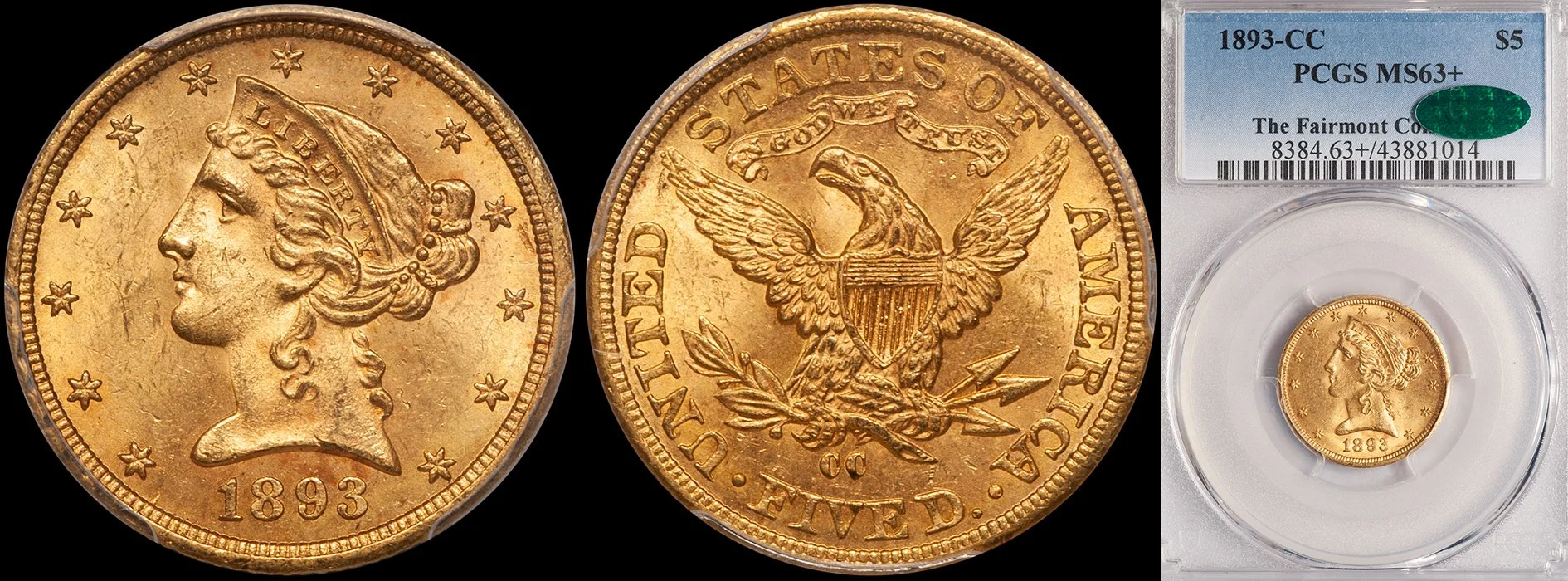Numismatic Market Correction
/I am seeing signs that we have been in the midst of a market correction in numismatics. Not a big correction, but a downturn in prices nonetheless. It is hard to say if this correction will continue for some time or if it is temporary. Looking at the history of the coin market and its continual swings up and down, I would say that the near-future of the market is a pretty tough call to make. (I still contend that the existence of the Internet makes the current coin market a completely different beast than the market that existed in the 1980’s and the early 1990’s.) But for the sake of argument, let’s say that prices are going to drop for awhile and that liquidity is not going to be as great as it has been for the last few years. What are the coins that are most likely to be adversely affected and which are most likely to be “safe?”
To be as simplistic as possible, the coins that do worst in a bad market are the worst coins. By this, I mean coins that are ugly or coins that are not rare or coins that are just plain uninteresting. Having lived through a number of bad markets myself, I can tell you that the last thing I will buy in this sort of market is an ugly coin that I know will sit around for months waiting for someone to buy it.
To be more specific, I think that some of the sort of coins that could be really hard to sell in a bad market include the following:
*Unappealing, scrubbed up examples of just about anything. Unless a coin is very rare or in great demand, coins that have zero originality and poor eye appeal are not going to be selling well.
*Unusual date gold coins. I’ve discussed these sorts of items before. Coins like 1895-S eagles. In a good market, coins like this are hard to sell. In a bad market, forget about it. Unless they are essentially priced as common dates (or at a huge discount relative to Trends), it is extremely hard to sell unusual date gold coins in a bad market.
*Boring coins. Try convincing someone to buy a common date Indian Head half eagle in MS62 when the market is crummy. Believe me, its hard enough when the market is good!
*High grade modern coins. The first people who disappear in a bad market are newbies and speculators; the two groups who buy most high grade modern coins.
*Coins that have been overpromoted. An example of this is Indian Head quarter eagles. These have been promoted now for well over five years. The promotion has been excellent and prices have risen a lot. At this point, one wonders how much more life this promotion has left.
*Overpriced coins. This is the most subjective category on this list and the hardest to accurately predict. I think most people will agree that High Reliefs are overpriced and that a correction is long overdue. But is a coin like a 1795 eagle overpriced? The market levels for this coin are at an all-time high but who wouldn’t want to own an example of this legendary issue?
What are the types of coins that are safest in a bad market? It doesn’t take a genius to figure out my answer: good coins. During really bad coin markets (like in the early 1990’s), really good coins dropped alot in price. People forget that as recently as 2000-2001, it was very hard to sell expensive coins and I can remember great coins like an 1808 Quarter Eagle in NGC MS63 sitting in my inventory for months and months before I could sell it (and only then at a small loss). But when the market does come back, really good coins come roaring back with a vengeance.
I would suggest that the following types of coins are less likely to get clobbered in a bad market:
*Anything with attractive original surfaces. I predict that in the next market cycle, people will pay huge premiums for gold coins that haven’t been stripped-n-dipped.
*Coins dated in the 1790’s. These coins are now well into their third century of existence and it is hard to not get excited by a gold coin that is this old.
*Key dates in popular series, especially if they are relatively affordable. I recently listed an 1847-O half eagle in PCGS AU50 on my website and was amazed that I got nine orders for the coin in less than a week.
*Coins with great historical backgrounds. A coin made during the Civil War or during the Gold Rush has a great story to tell and one that can be easily told.
*Coins with great pedigrees. In a bad market, the faux collectors and pseudo- dealers get pushed out and the people who really love coins get to have their day in the sun again. These people love the history behind their coins and they are willing to pay extra for a coin that has been owned by a great collector like Harry Bass or Louis Eliasberg.
One last piece of advice. Smart, long-term collectors love weakness (real or perceived) in markets. It’s a chance for them to take advantage of unsophisticated collectors (and dealers) who have no staying power and who panic at the first sign of weakness. I regularly talk to good customers of mine who remind me of certain great coins that we were able to acquire in the early part of this decade at very favorable prices because everyone else was scared to buy them.










